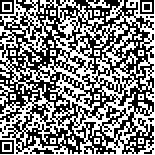| 本文已被:浏览 1953次 下载 1943次 |

码上扫一扫! |
| 含银亲水纤维敷料封闭中厚皮供皮区创面的临床观察 |
| 张放1,2,唐洪泰1,王广庆1,张梅1,黄毅3,王亮1,胡晓燕1,夏照帆1* |
|
|
(1. 第二军医大学长海医院烧伤科,全军烧伤研究所,上海 200433
2. 解放军南京军区73901部队,上海 200439
3. 江西省赣州市立医院烧伤科,江西 341000
*通信作者) |
|
| 摘要: |
| 目的 通过与传统凡士林油纱进行比较,分析新型含银亲水纤维敷料封闭中厚皮供皮区的临床效果。 方法 选取第二军医大学长海医院烧伤科2012年3月至2013年3月收治的自体中厚皮移植手术患者为研究对象。符合入选标准的30例患者按供皮区封闭方法分为两组,试验组(10例)为含银亲水纤维敷料封闭中厚皮供皮区,对照组(20例)为传统凡士林油纱封闭中厚皮供皮区。每一试验组病例产生时,按诊断类似配比2例对照组病例。记录入选患者的人口统计学特征、供皮区情况、术后供皮区创面感染情况、创面上皮化时间、术后第1次更换外层纱布时间、术后第1次更换外层纱布疼痛情况及纱布渗血层数。 结果 试验组供皮区创面上皮化时间(d)早于对照组(9.60±0.84 vs 10.90±1.02,P<0.05),术后第1次更换外层纱布疼痛评分小于对照组(1.50±0.71 vs 3.75±0.79,P<0.05),术后第1次更换外层纱布时间(d)晚于对照组(7.30±0.48 vs 5.45±1.64,P<0.05),术后第1次更换外层纱布渗血层数少于对照组(1.00±0.67 vs 3.10±0.85,P<0.05)。 两组创面均未出现感染。结论 新型含银亲水纤维敷料封闭中厚皮供皮区方法可以缩短创面愈合时间,减少患者痛苦,具有良好的杀菌和止血作用,疗效满意。 |
| 关键词: 封闭敷料 皮肤移植 供皮区 创口愈合 |
| DOI: |
| 投稿时间:2013-06-16修订日期:2013-07-30 |
| 基金项目:国家自然科学基金重大国际合作研究项目(81120108015). |
|
| Application of silver-containing Hydrofiber○〖KG-*3/4〗R dressing in sealing donor site of the split-skin: a clinical observation |
| ZHANG Fang1,2,TANG Hong tai1,WANG Guang qing1,ZHANG Mei1,HUANG Yi3,WANG Liang1,HU Xiao yan1,XIA Zhao fan1* |
(1. Department of Burns, Burn Institute of PLA, Changhai Hospital, Second Military Medical University, Shanghai 200433, China
2. No. 73901 Troop, PLA Nanjing Military Area Command, Shanghai 200439, China
3. Department of Burns, Ganzhou Municipal Hospital, Ganzhou 341000, Jiangxi, China
*Corresponding author.) |
| Abstract: |
| Objective To evaluate the clinical efficacy of silver-containing HydrofiberR○ dressing in sealing the donor sites of the split-skin by comparing with traditional petrolatum gauge. Methods A prospective case-control study was performed from March 2012 to March 2013 in Department of Burn, Changhai Hospital. A total of 30 patients fulfilling the inclusion criteria were allocated into two groups according to the methods of sealing the donor sites. The donor sites of the study group(10 patients) were treated with silver-containing HydrofiberR○ dressing and those in the control group (20 patients) were treated with petrolatum gauge. For each study case, two cases with similar diagnosis were allocated as controls. The following data were recorded: demographic data, condition of donor sites, infection rate of the donor sites, time for re-epithelization of the donor sites, time of first postoperative dressing change, pain score and number of gauges soaked with blood during first postoperative dressing change.Results The study group needed a significantly shorter time for re-epithelization of the donor sites compared with the control group (\[9.60±0.84\] d vs \[10.90±1.02\] d,P<0.05). The study group also exhibited significantly lower pain score during first postoperative dressing change as compared with the control group (1.50±0.71 vs 3.75±0.79,P<0.05). The time interval between skin grafting and first postoperative dressing change in study group was significantly longer than that in the control group (\[7.30±0.48\] d vs \[5.45±1.64\] d,P<0.05). The number of gauges soaked with blood at the first postoperative dressing change in study group was significantly less than that in the control group (1.00±0.67 vs 3.10±0.85,P<0.05). Wound infection was not found in both study group and control group. Conclusion Silver-containing HydrofiberR○ dressing applied for the donor site of the split-skin can promote the healing of the donor sites, reduce local pain, and have satisfactory antiseptic and hemostatic effects, with acceptable therapeutic outcomes. |
| Key words: occlusive dressings skin transplantation donor site wound healing |
.jpg)
.jpg)